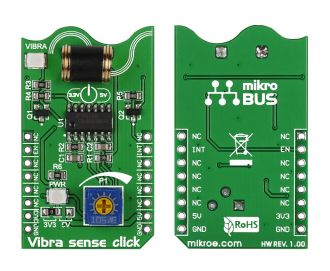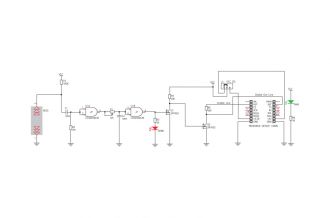Code Categories
- Click Boards (1762)
- Audio & Speech (167)
- Communication (493)
- Graphics & LCD (350)
- GSM / GPRS (18)
- GPS (19)
- Measurement (459)
- Power supply (47)
- Storage (44)
- Timers (Real time clock) (122)
- Other Codes (340)
- Internal MCU modules (83)
- Gaming and Fun (56)
- RFid (12)
- Motor Control (119)
- Bootloaders (17)
- Development Systems (68)
TOP Contributors
- MIKROE (2784 codes)
- Alcides Ramos (405 codes)
- Shawon Shahryiar (307 codes)
- jm_palomino (133 codes)
- Bugz Bensce (97 codes)
- S P (73 codes)
- dany (71 codes)
- MikroBUS.NET Team (35 codes)
- NART SCHINACKOW (34 codes)
- Armstrong Subero (27 codes)
Most Downloaded
- Timer Calculator (141659 times)
- FAT32 Library (74712 times)
- Network Ethernet Library (59171 times)
- USB Device Library (49205 times)
- Network WiFi Library (44983 times)
- FT800 Library (44513 times)
- GSM click (31158 times)
- mikroSDK (30072 times)
- microSD click (27573 times)
- PID Library (27535 times)

Package Manager
We strongly encourage users to use Package manager for sharing their code on Libstock website, because it boosts your efficiency and leaves the end user with no room for error. [more info]

Vibra sense click
Rating:
Author: MIKROE
Last Updated: 2019-03-28
Package Version: 1.0.0.1
mikroSDK Library: 1.0.0.0
Category: Motion
Downloaded: 5190 times
Followed by: 5 users
License: MIT license
Vibra Sense click is a low cost micro shock vibration sensor with a digital output which can be set as an Interrupt (mikroBUS INT pin). An onboard potentiometer lets you set the interrupt threshold.
The board is designed to use either a 3.3V and a 5V power supply.
mikroSDK Library Blog

Library Description
The library covers all the functions necessary for the use of Vibra sense Click board.
Vibra sense Click uses GPIO and PWM to communicate. This library contains drivers for
enabling or disabling PWM and for enabling, disabling or reseting the device itself and
a function for checking the interrupt pin.
Key functions:
- uint8_t vibrasense_checkInterrupt() - Function is used to check for an interrupt that indicates that the device has detected vibrations.
void vibrasense_enable()- Function sets the RST pin.- void vibrasense_reset() - Function resets the device.
Examples Description
The application is composed of three sections:
- System Initialization - Initializes GPIO and LOG structures, sets RST pin as output and INT pin as input.
- Application Initialization - Enables GPIO and PWM, sets the frequency and duty cycle and makes an initial log.
- Application Task - (code snippet) This is a example which demonstrates the use of Vibra sense Click board. It detects vibrations and enables PWM and writes log according to them.
void applicationTask()
{
if( vibrasense_checkInterrupt() )
{
mikrobus_logWrite( " TILT!!! ", _LOG_LINE );
mikrobus_logWrite( "-------------------", _LOG_LINE );
vibrasense_pwmStart();
Delay_ms( 100 );
vibrasense_pwmStop();
Delay_ms( 200 );
}
}
Other mikroE Libraries used in the example:
- PWM
- UART
Additional notes and informations
Depending on the development board you are using, you may need USB UART click, USB UART 2 click or RS232 click to connect to your PC, for development systems with no UART to USB interface available on the board. The terminal available in all MikroElektronika compilers, or any other terminal application of your choice, can be used to read the message












